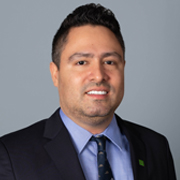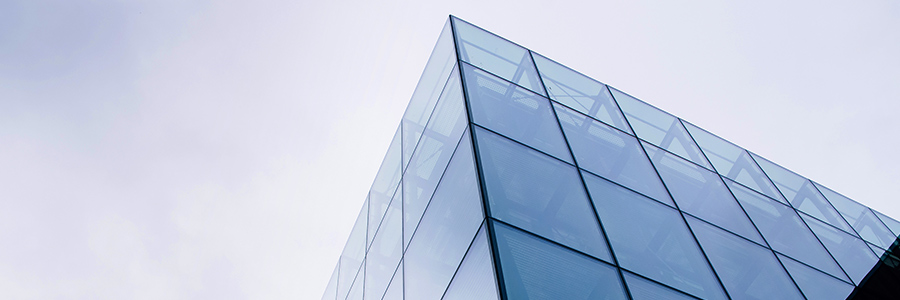February 2023 FOMC: Are We There Yet?
By: Jan Groen, Oscar Muñoz, Mazen Issa, Priya Misra, Gennadiy Goldberg
January 30, 2023 - 7 minutes 30 seconds
The likely slowdown in hiking pace had been telegraphed by several Fed officials in the two weeks leading up to the FOMC communication blackout, and it would be the second consecutive downshift in hiking pace by the Fed. This comes after the release of the December CPI report, which made clear that inflation is easing. Combined with the Fed's policy stance now having moved solidly into restrictive territory, this likely reassured the Fed that it can continue its hiking campaign by means of more "conventional" rate hike magnitudes.
We're Not Done Yet
It is clear that the Fed's job is not done yet and, consequently, we are expecting additional 25bp rate hikes at the March and May FOMC meetings. This will bring our projection of the terminal Fed funds target range to 5.00%-5.25% to be reached in May. Sticky core services inflation, in our view, will keep the Fed on hold at the terminal rate level for the remainder of the year. We therefore expect the 25bp rate hike at the forthcoming FOMC meeting to be "hawkish" in nature. The post-meeting statement and press conference will likely welcome the easing in inflation numbers as a good step in the right direction, but also point to continued elevated core services inflation and labor market tightness as signs that the Fed cannot afford to stop hiking just yet.
The key question is whether a 5.25% terminal rate is sufficiently restrictive to eventually bring inflation back on a path towards the Fed's 2% target. If it is unclear by Q2 that core services excl. housing inflation rates are moving to below 3.5% territory, with the unemployment rate remaining relatively low and job openings relatively high, it would likely convince the Fed that 5.25% is not restrictive enough and rate increases would continue beyond May. On balance, we believe that the risks around our 5.25% terminal rate projection are skewed towards a higher terminal rate.
FX Strategy
FX markets have also largely moved on from central bank speak. Indeed, much of the G10FX complex is not as sensitive to STIR repricing as it used to be. The neutralization — or switch — of correlations to STIR markets came suddenly when the BoJ lifted its yield-cap last month. That has thrown a monkey wrench into sensitivity analysis since markets are now priced for more BoJ policy changes, which are bond bearish for global rates, but at the same time, the Fed has indicated that it is almost done tightening.
At a minimum, this is a strong indication that Fed policy leadership has shifted abroad. At the same time, data abroad has also started to improve. European PMIs have signaled a bounce. Meanwhile, fears of a European energy crisis have abated given weather and storage capacity. China re-opening has aided the cyclical growth rebound (or at the very least, reduced the drag) that inevitably leads to a commodity bounce. We are less convinced that the latter is a linear development, but the market is content with this kind of hopium.
On the flip side, the Fed could take a cue from the BoC and signal a conditional end to tightening. That would undoubtedly fuel further USD weakness as the curve would reduce terminal rate pricing and likely support risk assets (and probable continued relative US equity underperformance). But, this scenario seems rather improbable (and much less likely vs. a 50bp hike) given the Fed has been turning blue in the face over higher for longer. It would also risk undermining the progress done on inflation and could potentially fuel longer term expectations.
Overall, this Fed meeting does not suggest that the status quo in markets will change. The USD looks stretched on tactical valuations and technicals, but a catalyst remains absent. As such, we remain of the view that USD rallies are a fade, with bullishness on the yen our highest conviction medium-term bias. Markets also appear content to position for a continuation of risk-on vibes. That leaves the dollar bloc — which offers one of the highest betas to risk (outside of CAD) — liable to further gains.
Rates Strategy
We expect several factors to help determine the market's reaction to the February FOMC decision:
- Pushback on terminal rate pricing: With the market only penciling in a 4.89% terminal rate, any pushback by Powell on market pricing could nudge the terminal rate and front-end rates higher.
- Characterization of inflation and growth: While we expect the Fed to continue suggesting that inflation remains too high and the job is not yet done, any suggestion that inflation is expected to slow quickly could leave the markets reacting dovishly.
- Rate cut pricing and QT: Any pushback by the Chair on the market's pricing for rate cuts in 2024-2025 could create some market volatility. Both NY Fed's Williams and Dallas Fed's Logan suggested that the Fed could keep QT in place even as they begin to cut rates, since the cuts will be to take policy to neutral. Any indication by Powell that the committee is leaning in this direction could also be seen as hawkish. However, we expect the Fed to suspend QT after the first-rate cut next year.
Views and Biases:
- Higher Fed terminal than market implied: We continue to see a higher terminal rate forecast than the market is currently penciling in at 4.9% (consistent with a 4.75-5.00% terminal rate).
- 10y higher in the near-term but lower by year-end: We are looking for higher 10y rates in the near term as the Fed maintains its dot plot-implied terminal rate, economic data suggests no imminent recession, and global rates rise. But we look for yields to gradually decline later in the year as the economy slows, and our 10y Treasury yield forecast at 2.9% is well below the market's consensus at 3.4%.
- Curve inversion to persist all year: We expect the 2s10s curve to remain inverted all year before moving into positive territory only in early-2024.
- Higher term premium due to global rates: A hawkish ECB and imminent QT as well as a loosening of the BOJ's YCC in coming months should spill over into US term premium and long end rates.
Subscribing Clients can access full report: February FOMC: Are We There Yet? on the TD Securities Market Alpha Portal

Chief U.S. Macro Strategist, TD Securities

Chief U.S. Macro Strategist, TD Securities

Chief U.S. Macro Strategist, TD Securities

Vice President and U.S. Macro Strategist, TD Securities

Vice President and U.S. Macro Strategist, TD Securities

Vice President and U.S. Macro Strategist, TD Securities

Director and Senior FX Strategist, TD Securities

Director and Senior FX Strategist, TD Securities

Director and Senior FX Strategist, TD Securities

Managing Director and Global Head of Rates Strategy, TD Securities

Managing Director and Global Head of Rates Strategy, TD Securities

Managing Director and Global Head of Rates Strategy, TD Securities

Director and Senior U.S. Rates Strategist, TD Securities

Director and Senior U.S. Rates Strategist, TD Securities

Director and Senior U.S. Rates Strategist, TD Securities




